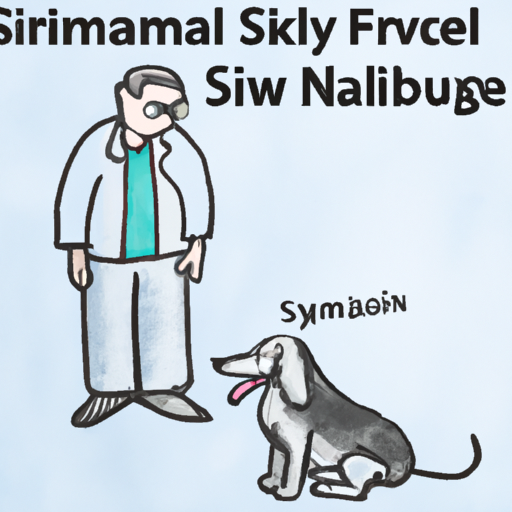Overview of Wobbler’s Syndrome
First, let’s address the question that’s likely been nagging at your mind, “What exactly is Wobbler’s Syndrome?” Often referred to as cervical spondylomyelopathy (CSM), Wobbler’s Syndrome is a neurologic disease that affects the neck and spinal cord of dogs. It’s a condition that primarily affects large and giant breeds, often causing a wobbly, uncoordinated gait – hence the name, Wobbler’s Syndrome.
Causes and Risk Factors
Imperative to understanding Wobbler’s Syndrome is knowing what causes it. The leading cause of this condition is the compression of a dog’s spinal cord and nerve roots. This compression can result from a variety of factors, including:
- Abnormal growth
- Nutritional factors
- Genetics
Breeds most commonly affected include the Doberman Pinscher and the Great Dane.
Symptoms and Diagnosis
As a caregiver, it’s essential to recognize the signs of Wobbler’s Syndrome in your dog. Symptoms can vary from mild to severe and may include:
- Neck pain and stiffness
- Weakness in the limbs
- Difficulty walking or climbing stairs
- In severe cases, paralysis
If you notice any of these symptoms in your dog, it is crucial to consult a veterinarian immediately. They will likely conduct a series of tests, such as X-rays, MRI scans, or CT scans to confirm the diagnosis.
| Test | Purpose |
|---|---|
| X-rays | To get an overview of the spine and neck |
| MRI scans | To see detailed images of the spinal cord |
| CT scans | To identify any abnormalities in the bones and tissues |
Treatment Options
Treatment for Wobbler’s Syndrome can be both medical and surgical, depending on the severity of the condition. Medical treatment usually involves the use of anti-inflammatory drugs and pain killers. In more severe cases, surgery can be considered to alleviate the pressure on the spinal cord.
Management and Prognosis
Managing Wobbler’s Syndrome primarily involves ensuring your dog’s comfort and quality of life. Regular vet visits, a healthy diet, and limited strenuous activity can help manage the condition. The prognosis varies widely, with some dogs living normal lives with the condition, while others may experience a gradual decline in their mobility.
FAQ
Q: Is Wobbler’s Syndrome painful for my dog?
A: Yes, Wobbler’s Syndrome can cause significant discomfort and pain to your dog, particularly in the neck area.
Q: Can my small dog get Wobbler’s Syndrome?
A: While it’s more common in large and giant breeds, Wobbler’s Syndrome can affect dogs of any size.
Q: Can Wobbler’s Syndrome be cured?
A: While there’s no definitive cure for Wobbler’s Syndrome, many dogs can live a good quality of life with the right management and treatment.
Q: How can I prevent my dog from getting Wobbler’s Syndrome?
A: While there’s no guaranteed prevention method, maintaining your dog’s overall health and regular vet visits can help in early detection and management.



